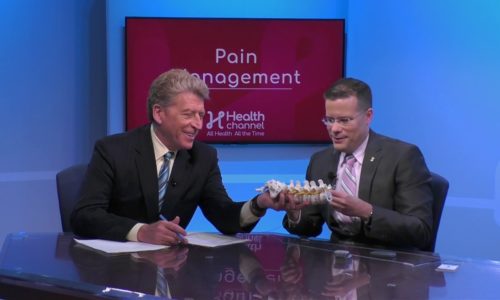Vertebral Column: Behavior & Development |
With a 3D model, Dr. Georgiy Brosuvanik, Spine Surgeon with Baptist Health South Florida, explains what the anatomy of cervical spine looks like.
The doctor also gives an explanation about when patients have symptoms in the extremities. He says it’s easy to trace the pain back to which the disk is the problem and, then, to confirm it with an MRI (magnetic resonance imaging).
Transcript
We have a 3d model that I’d like our doctor to walk over to, and it kind of will explain to you, and I think you’re gonna walk us through how the spine works, so let’s take that 3d model if we can, doctor walk over there, and kind of give us you know a little one-on-one, education one on one on the spine and the anatomy if you will.> Absolutely happy to, so this is a side view of the human spine, you could see the angle of the jaw, and that’s the section of the jaw right there, and these are the vertebral starting from the first all the way down to the seventh, now you see that they’re these gray stripes between the bones, those are the disks, now disks actually as you can imagine dynamic soft cushioning objects that provide very important space, you see these little small channels that are right behind the disks, they’re less visible here, these are the very channels where the nerves coming from the brain exit the neck on their way down to their arms, so for example, if a patient has pain sort of on the thumb side on the back of the wrist, that’s frequently the c-56 disc and the c6 nerve, that’s a very common problem, and as you can see, one, two, three, fou,r five, six, it would be the nerve exiting between these two bones, so when patients have extremity symptoms, it’s easy to trace the pain back to which the disc is the problem, and then usually we obtain an MRI to confirm.








